
PRESIDENTIAL PROS & CONS – Part Two
June 6, 2016
THE SPANISH INQUISITION!
July 11, 2016Thousands of years ago, the Pharaohs were believed to be the mortal incarnations of the gods on Earth. The Pharaoh was ‘The Son of Ra’, ‘Lord of the Two Lands’ and ‘High Priest of Every Temple’. These Egyptian monarchs were both political and religious leaders charged with maintaining order. Many of their secrets have since been lost to time (or tomb raiders), but if there’s one thing archaeologists have pieced together from their ancient emoticons and cat pictures, it’s that the Pharaohs of Egypt were very human.
 Ancient Egypt is in the records books for being the longest-running civilization of the ancient world. Although it wasn’t the first civilization, it was one of the greatest and most powerful, partially thanks to the prosperous Nile River. Over the course of its insane Three-Millennial history, the Ancient Egyptians paved the way for: modern art, architecture, fashion, and even economics (oddly enough they traded honey as currency at one point).
Ancient Egypt is in the records books for being the longest-running civilization of the ancient world. Although it wasn’t the first civilization, it was one of the greatest and most powerful, partially thanks to the prosperous Nile River. Over the course of its insane Three-Millennial history, the Ancient Egyptians paved the way for: modern art, architecture, fashion, and even economics (oddly enough they traded honey as currency at one point).
The Egyptians believed in multiple gods who took on bizarre and animalistic forms, and held even stranger notions of the afterlife. Over the centuries, they developed an entire culture based around preparing for the journey after death. They even had the equivalent of a video game player’s guide with step-by-step instructions through the obstacles of the underworld’s labyrinth.
This obsession with life-after-death led to the creation of the pyramids, constructed as tombs for the pharaohs – massive, intricate, temples jam-packed with anything and everything a mummified King might require upon his resurrection, except for a kitchen sink. You know, a fully stocked pantry, butt loads of treasure, petrified pets, and even a whole staff of buried alive servants, the works. (Click Here for more on Egyptian Mythology)
Ancient Egyptian history is split between three-different periods: The Old Kingdom, the Middle Kingdom and the New Kingdom, which funny enough is still older than most of recorded history. Over the course of a good 3,100 years and about 30 dynasties there were approximately 333 Pharaohs but due to terrible cultural memories and even worse mismanagement of historical artifacts, we only have a handful of clues about a select few of these infamous Pharaohs…
- The Scorpion King
 A good 5,000 years ago, (give or take a century) there was a man named Scorpion… not to be confused with the Mortal Kombat character or that movie starring Dwayne ‘The Rock’ Johnson. This guy was a King or Chieftain of Upper Egypt during the proto-dynastic period. What is the proto-dynastic period you ask? Well, that is the period prior to the dynastic period of Ancient Egypt aka the time of the Pharaohs and stuff.
A good 5,000 years ago, (give or take a century) there was a man named Scorpion… not to be confused with the Mortal Kombat character or that movie starring Dwayne ‘The Rock’ Johnson. This guy was a King or Chieftain of Upper Egypt during the proto-dynastic period. What is the proto-dynastic period you ask? Well, that is the period prior to the dynastic period of Ancient Egypt aka the time of the Pharaohs and stuff.
Side note: it’s worth noting that Upper Egypt actually refers to the southern Nile region, while Lower Egypt for some reason, refers to the geographic North… just because.
The Scorpion King or Scorpion II is one of the earliest Egyptian rules, depicted in the art of the period. Most Egyptologists (no, I didn’t make up that term) credit this Scorpion dude with uniting the Upper and Lower Kingdoms, but because of the complete lack of records, there’s not much known about this Scorpion person, including but not limited to where he’s buried.
 Much is still left to speculation, for instance:
Much is still left to speculation, for instance:
- He may or may not have been the successor of Ka
- He may or may not have been named after the scorpion goddess Serket
- He may or may not have been the first Pharoah of the First Dynasty
- Hey may or may not have been the same person as Narmer and / or Menes
- Hey may or may not have existed at all
2. Sneferu
Founder of the Fourth Dynasty, Sneferu was most known for his architectural endeavours, most notably the Bent Pyramid… a pyramid that nearly collapsed in on itself from the steep incline, forcing the builders to adjust halfway through. He also built the Meidum and Red Pyramids of Dahshur.
3. Khufu
Khufu, son of Sneferu, decided to one-up his old man when he commissioned the Great Pyramid of Giza, one of the last-standing Seven Wonders of the Ancient World. You know the pyramid from the movie Stargate, that was just recently discovered to be slightly lopsided. Even though there’s still much left to speculation, there’s a few things we do know for certain about the Great Pyramids:
 The pyramids were basically oversized tombs dedicated to Pharaoh’s ego (although that is still somewhat up for debate)
The pyramids were basically oversized tombs dedicated to Pharaoh’s ego (although that is still somewhat up for debate)- Sorry Ben Carson, they were never once used for grain storage
- The pyramids were originally covered in white limestone and gold which has since been stripped away by greedy tourists over the last 4,000+ years
- Khufu’s pyramid took about 20 years to build
- The pyramids were constructed over an underground maze of tunnels known as the necropolis
- It’s a misconception that slaves built the pyramids, there’s actually records indicating paid labor
- No, aliens did not build them either, despite what the History channel claims
Khufu is remembered very differently from conflicting reports, some inscriptions claim that he was a pious and generous ruler, while Greek historians (like Herodotus) called him a cruel tyrant. Oddly enough, there’s only one remaining depiction of him: a 3-inch high ivory statue…
4. Pepi II
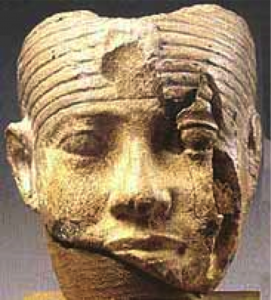
Pepi II (6th Dynasty, Old Kingdom) was by far the longest ruling Egyptian monarch at 94 years! The first half of Pepi’s rule was prosperous, the second half… not so much. Pepi’s rule ended in economic disarray due to virtually no oversight. His rule marks the sharp decline of the Old Kingdom.
Hatshepsut, the sister / wife of Thutmose II, was an Egyptian Queen who ruled as a ‘King’ for decades, going so far as to dress as a man with a fake beard. After Thutmose’s passing, Hatshepsut took over the family business as the 5th pharaoh of the 8th dynasty and ushered in one of the most prosperous periods in Egypt’s history. Her husband / brother on the other hand, was quickly forgotten.
Hatshepsut, like many a pharaoh, is often depicted as being slender and idyllic in Egyptian art and statues, but archaeological evidence suggests otherwise. A steady diet of bread, honey and beer left her obese and diabetic.
6. Amenhotep IV aka Akhenaten
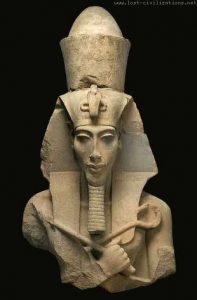 Amenhotep IV was pharaoh of the 18th dynasty of the New Kingdom. Amenhotep became obsessed with worshiping the Aten: a sun god. Near the Temple of Karnak in Thebes, he erected several massive buildings dedicated to the Aten and claimed that all the other Egyptian gods were beneath him. To add insult to injury, he changed his name to Akhenaten and claimed to be the living spirit of the Aten.
Amenhotep IV was pharaoh of the 18th dynasty of the New Kingdom. Amenhotep became obsessed with worshiping the Aten: a sun god. Near the Temple of Karnak in Thebes, he erected several massive buildings dedicated to the Aten and claimed that all the other Egyptian gods were beneath him. To add insult to injury, he changed his name to Akhenaten and claimed to be the living spirit of the Aten.
Akhenaten basically attempted to obliterate the Egyptian Pantheon in place of a monotheistic religion based around… himself. As you can imagine this backfired horribly, especially considering their government up until that point was based entirely around the state religion. This completely destabilized the Kingdom. After his death, the Pharaohs who followed did all they could to reverse his reforms and erase Akhenaten’s name from history.
7. Tutankhamen
Despite being one of the most famous pharaohs, there is very little we actually know about King Tut. His tomb was discovered in 1922 and was the most well preserved among those discovered in the Valley of the Kings. We do know he died at about 19, but there’s multiple theories on how he died: was he murdered, was it a freak accident or was he killed by a hippopotamus? Radar scans recently discovered unopened hidden passages within Tutankhamen’s tomb, so maybe we’ll have more answers soon…
8. Ramses II
Ramses II or Ramesses the Second (19th Dynasty, New Kingdom) was the son of Seti I and is considered by many to be both the greatest and worst pharaoh to ever live. He had over 100 children with about 200 wives, and more statues of himself than Kim Il-Sung. The poem ‘Ozymandias’ is based on him and some suggest that he’s in fact the pharaoh from the Biblical book of Exodus…
Ramses was completely obsessed with making a name for himself, even if that meant taking credit for things he didn’t do. If building multiple cities named after himself wasn’t enough, he even had a museum dedicated to his greatness: The Ramesseum. Throughout his reign, he would scratch out the names of previous pharaohs and write in his own. The guy was so petty that after horribly losing the Battle of Kadesh against the Hittites, barely escaping with his life and was forced to sign a peace treaty, he had a massive mural commissioned, showing his miraculous triumph.
According to his mummified remains, he probably died of a tooth ache.
9. Psamtik III
Psamtik the Third (the last of the 26th dynasty) was only Pharoah for about six months before a full-scale Persian invasion rolled into town led by King Cambyses II. He was easily defeated at the Battle of Pelusium and fled to Memphis where he was captured. Psamtik (aka Psammetichus) attempted to raise a rebellion but failed in his efforts and knowing his execution was imminent, drank ram’s blood and died.
10. Xerxes
Xerxes was the Persian Emperor whose massive armies were defeated by the hopelessly outnumbered Greeks at the Battle of Salamis, but he was also considered a tyrant by the people of Egypt. The Egyptians rebelled against him for his complete contempt for their culture. Xerxes put down the rebellion with excessive force and then forced the Egyptians to help the war effort against the Spartans and Athenians in Greece.
Did I mention how terribly his invasion of Greece failed?
11. Cleopatra VII
Cleopatra was the last Pharoah of Egypt, and the last of the Greek Ptolemy Dynasty. She played an integral role in the rise of the Roman Empire between her notorious affairs with Julius Caesar and Marc Antony, ultimately losing her throne to Octavius, the first emperor of Rome. Upon hearing of Antony’s fate, rather than be enslaved, subjugated or killed by the Romans, she committed suicide via cobra.
ERIK SLADER
Thanks for reading! If you’re a fan of the blog, be sure to listen to the Epik Fails of History podcast and check out my all new “EPIC FAILS” book series – available now wherever books are sold!
—– More articles on Historic Failure:
THE 7 ANCIENT WONDERS OF THE WORLD
—Sources:
“The Book of Ancient Bastards” by Brian Thornton
“Chronicle of the Pharaohs” by Peter A. Clayton
http://www.ancient-egypt-online.com/famous-pharaohs.html
http://history1900s.about.com/od/1920s/a/kingtut.htm
http://www.cnn.com/videos/world/2016/06/22/great-pyramid-of-giza-lopsided-jnd-orig-vstan.cnn
http://www.history.com/news/history-lists/11-things-you-may-not-know-about-ancient-egypt

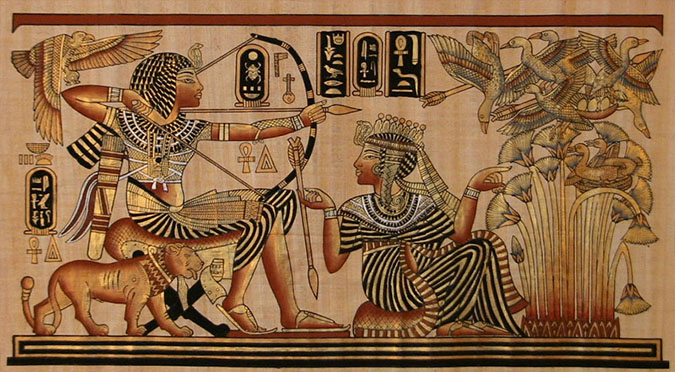

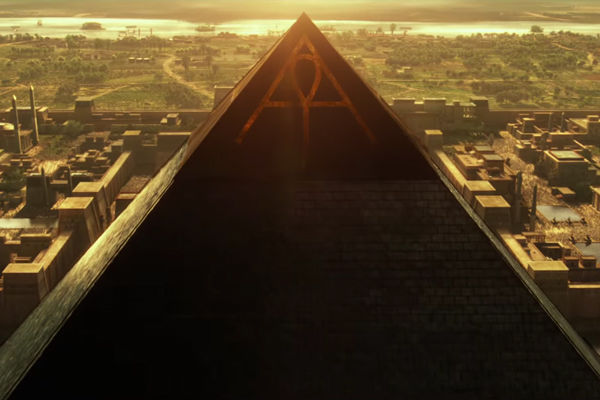


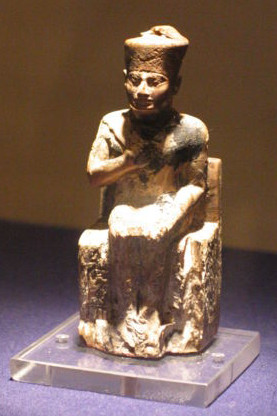

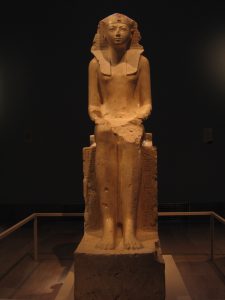

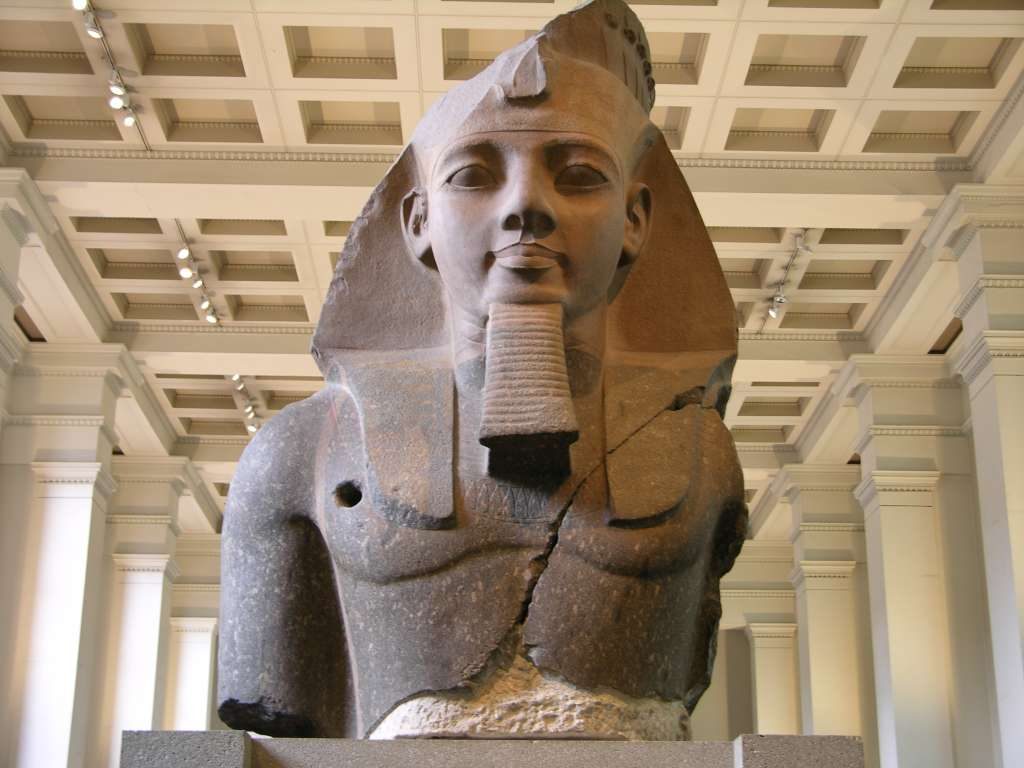
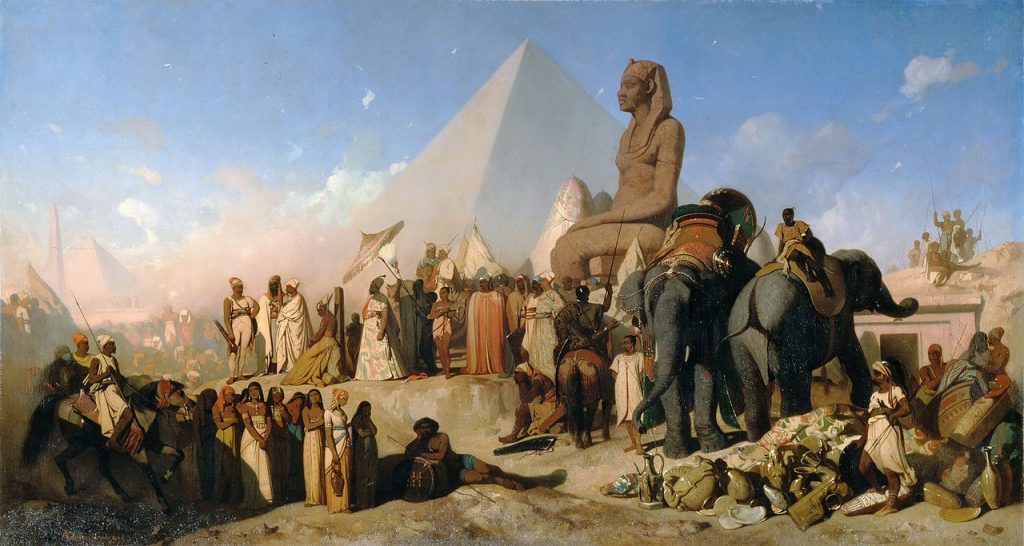
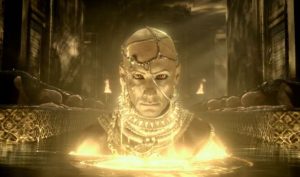
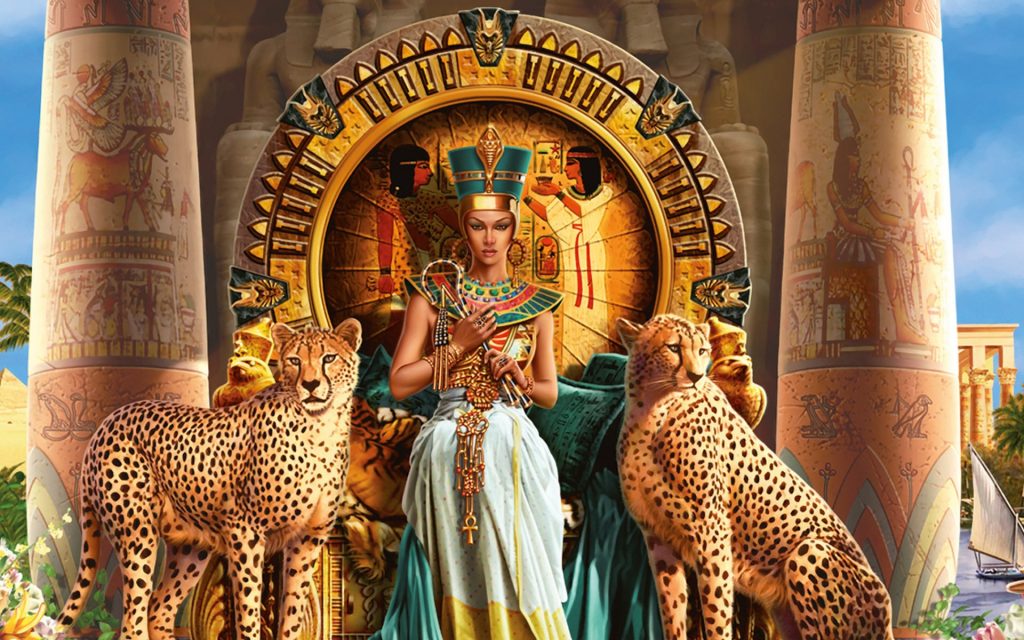

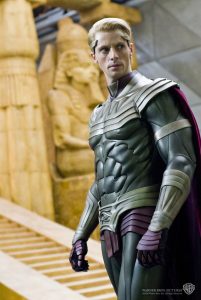



5 Comments
I like it when people come together and share thoughts.
Great blog, keep it up!
it was a hell of a book
I am at school and reading this its packs with info and facts!!!
Khufu was and is always the wort pharaoh,king tut ll should be inside the pyramid of Giza!
No arguments here lol